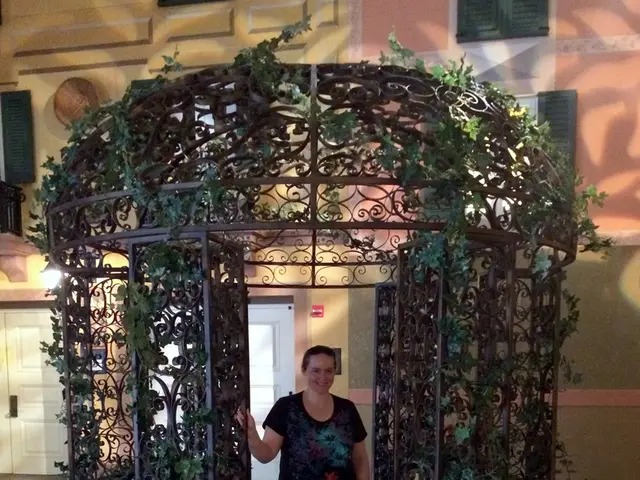Summer's Star on Île de Ré's Salt Blossom: Unveiling Its Benefits in Charente-Maritime
Artisanal Sea Salt Flowers of the Island of Ré
The picturesque island of Ré, located in the Charente-Maritime region, is not only known for its stunning beaches and charming villages but also for its production of a unique culinary delight – the sea salt flower (fleur de sel). This delicate and sought-after product is harvested from the salt marshes, making it a must-visit destination for food enthusiasts and tourists alike.
The island is the second-largest producer of French sea salt flowers, with annual harvests of 200 to 300 tons. The process of creating these exquisite crystals is a labor of love, with salt makers like Brice Collonnier using traditional methods, such as raking the salt from the surface of the ponds.
Melanie Guitton, a guide at the salt marsh museum in Loix, finds the process of making sea salt flowers fascinating. "It's like watching nature create a work of art," she says. These delicate crystals resemble frost and form small crystals in the middle of summer.
Sea salt flowers offer certain health benefits compared to classic refined table salt due to their mineral content and lower processing level. Unlike table salt, which is heavily refined and mainly consists of sodium chloride, sea salt flower is minimally processed and retains trace minerals like magnesium, potassium, and calcium. These minerals can support hydration, muscle function, nerve signaling, and overall electrolyte balance.
Key health benefits of sea salt flower compared to classic salt include a better mineral profile, improved hydration and electrolyte balance, reduced sodium intake per volume, potential adrenal and metabolic support, and flavor and culinary benefits. While these benefits exist, sea salt flower and sea salt generally still contain sodium and should be used in moderation to avoid excessive sodium intake, which is linked to high blood pressure and cardiovascular risk.
Delphine Negreanu, a dietitian-nutritionist in Bois-Plage-en-Re, highlights that sea salt flowers contain minerals like potassium, calcium, magnesium, and sodium, as well as trace elements. "Sea salt flowers are a great addition to a balanced diet," she explains.
For tourists, a visit to the salt marshes is not complete without a stop at the local shop selling sea salt flowers. At 20 euros per kilo, it's a logical next step after the salt marsh tour. In contrast, supermarkets on the island of Ré sell it for 24 euros per kilo, making the shop a more affordable option.
Romain Pédurant, an independent salt maker in the Picksel salt marshes, sells sea salt flowers for 13 to 20 euros per kilo at the market, which is cheaper than other sellers. A German tourist finds sea salt flowers to be a good souvenir for their unforgettable vacation scent, while a young woman finds the sea salt flower to be quite sweet when tasted.
Brice Collonnier appreciates the balance between nature, solitude, and hard work in his job. "It's a simple life, but it's fulfilling," he says. Tourists visit the salt marshes to learn about artisanal salt-making and taste the sea salt flowers, making the island of Ré a unique destination for those seeking a taste of traditional French craftsmanship and a touch of the sea.
Read also:
- Water Chemistry Dosage Guidance from AskBRS: Understanding What, How Much, and When to Add!
- Nurturing Permafungi Cultivation: An Organic Handbook for Fungi Farming
- Building Solar Power Systems for New Residential Properties: Harnessing Tomorrow's Energy from the Earth's Core
- Pro-Punk Demonstration Site on Sylt: Encouraging Result








